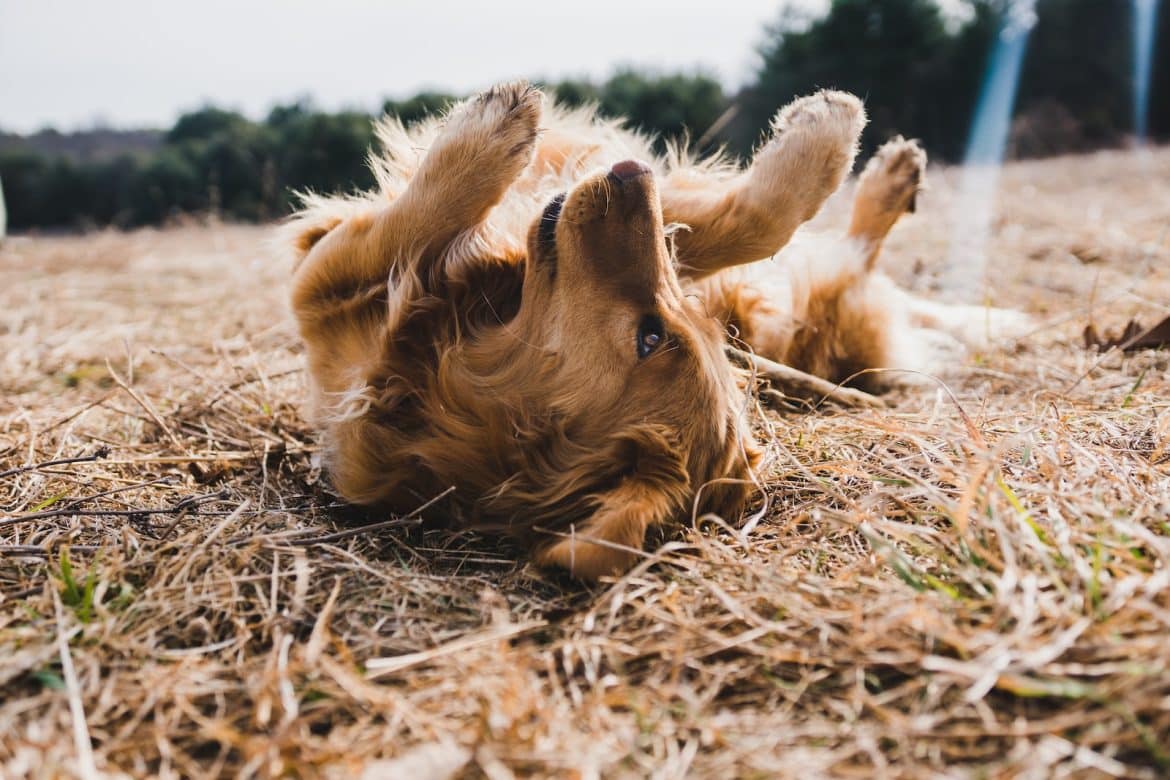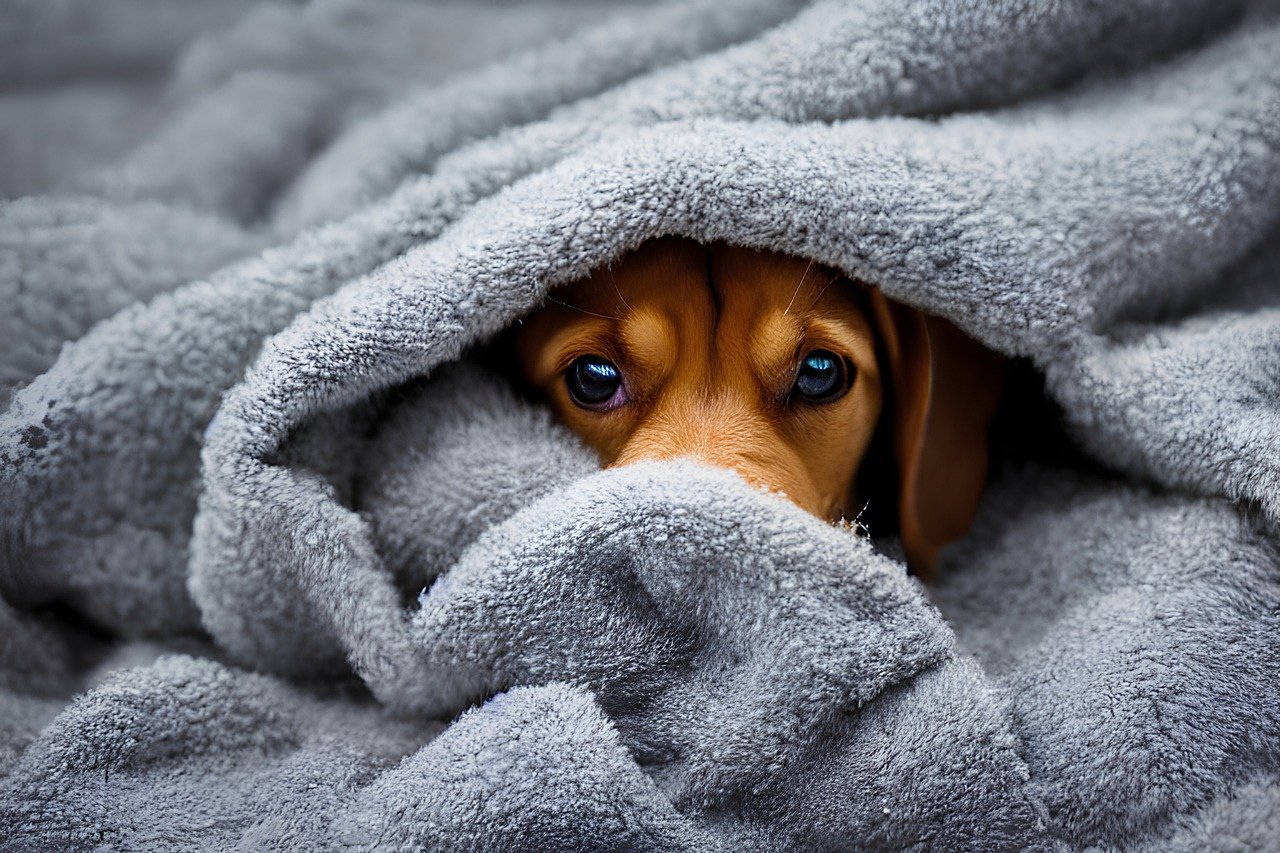Ever wondered why your furry friend loves rolling on their back and wiggling around? Dogs have a peculiar habit of flipping onto their backs and wriggling with delight. While this behavior may seem strange to us, there are actually several reasons behind it. From displaying submission and inviting affection to scratching an itch or simply enjoying a good stretch, dogs have their own unique ways of communicating and experiencing the world. In this article, we will explore seven fascinating reasons why dogs engage in this quirky behavior of rolling on their backs and wiggling. Get ready to unravel the mystery behind your dog's adorable antics!
Reasons for Dogs Rolling on Their Backs and Wiggling
Dogs engage in various behaviors to communicate with other dogs or their human counterparts. One of the most fascinating behaviors is when they roll on their backs and wiggle. This seemingly peculiar act can be attributed to several reasons, each revealing insight into a dog's mentality and social dynamics. By understanding these behaviors, you can better connect and communicate with our furry companions. Here are seven reasons why dogs often roll on their backs and wiggle.
Submission and Appeasement
Sign of Submissive Behavior
When a dog rolls on its back and wiggles, it is often a display of submissiveness. By exposing its vulnerable belly, a dog is indicating deference and acknowledging the dominant status of another dog or even a human figure. It is a way of saying, "You are in charge, and I pose no threat." This submissive behavior helps avoid conflict and diffuses potentially tense situations.
Avoiding Conflict and Signaling Non-Aggression
In addition to acknowledging dominance, rolling on their backs and wiggling is a non-aggressive way for dogs to establish peaceful interactions. It serves as a clear signal that they are not a threat and intend no harm. By adopting this submissive posture, dogs can minimize the risk of aggression and maintain a harmonious environment.
Acknowledging Dominant Dogs or Human Figures
For dogs, rolling on their backs and wiggling can also be a way of acknowledging the authority and dominance of other dogs or human figures. It is their way of showing respect and submitting to the higher-ranking individual. By doing so, they establish social boundaries and maintain a balanced hierarchy within their social group.

This image is property of images.pexels.com.
Playful Behavior
Inviting Play with Other Dogs
Rolling on their backs and wiggling can also be a playful behavior exhibited by dogs. When they adopt this posture, it serves as an open invitation for other dogs to engage in play. By expressing their desire for interaction, dogs can initiate joyous play sessions with their furry friends, reinforcing social bonds and enjoying the benefits of companionship.
Encouraging Playfulness in Humans
Not limited to dog-to-dog interactions, rolling on their backs and wiggling can also be a way for dogs to encourage playfulness in humans. They may adopt this posture as a cue for humans to engage in fun activities such as chasing, wrestling, or even gentle tickling. Dogs thrive on connection and play, and by showing their playful side, they invite humans to be active participants in their joyful antics.
Expressing Joy and Excitement
It is important to note that rolling on their backs and wiggling can also be a way for dogs to express their sheer joy and excitement. This behavior often accompanies tail wagging, bouncing, and a happy demeanor. By engaging in this exuberant display, dogs communicate their emotional state, inviting others to join in their excitement and happiness.
Showing Trust and Vulnerability
Indicating Trust in Humans or Bonded Dogs
When a dog rolls on its back and wiggles, it can indicate a high level of trust towards humans or other dogs it has a close bond with. By exposing their vulnerable belly, dogs effectively communicate that they feel safe and secure in the presence of trusted individuals. This behavior strengthens the bond between dogs and their human companions or fellow canines, fostering deeper connections and a sense of mutual trust.
Exposing Vulnerable Belly Region
Another reason for dogs rolling on their backs and wiggling is to expose their vulnerable belly region. The belly is a particularly sensitive area for dogs, and by displaying it willingly, they demonstrate a willingness to be vulnerable. This act can also be seen as a sign of submission and a gesture of peace, reinforcing social harmony and a calm environment.
Demonstrating Comfort and Security
Rolling on their backs and wiggling can also indicate that a dog is in a state of comfort and security. When they feel relaxed and content, dogs may choose to assume this posture as a form of self-soothing and relaxation. By embracing their vulnerability and exposing their belly, dogs communicate that they are at ease and trust their surroundings. This behavior is often seen when dogs are in familiar and safe environments or when they are in the presence of their trusted humans.
Marking Their Scent
Spreading Their Scent on the Environment
Dogs have a remarkable sense of smell, and rolling on their backs and wiggling can serve as a way for them to distribute their scent onto the surfaces they come into contact with. By doing so, they leave a personal mark on their environment, effectively claiming it as their own territory. This behavior is believed to be a way for dogs to communicate their presence and assert their ownership within their surroundings.
Asserting Territory and Ownership
Marking their scent through rolling on their backs and wiggling is a means for dogs to establish territorial boundaries. By leaving their scent on various surfaces, they communicate to other dogs that the area has been claimed and should be acknowledged and respected. This behavior reinforces a dog's sense of ownership and helps maintain a balanced social structure among animals within the vicinity.
Communicating Information to Other Dogs
In addition to territorial marking, rolling on their backs and wiggling can also serve as a form of communication between dogs. When dogs encounter surfaces marked by other canines, they can gather valuable information from the scent left behind. This exchange of olfactory information helps dogs understand the presence and characteristics of other dogs in the area, facilitating social interactions and establishing a network of communication within their community.
Scratching an Itch
Using the Ground or Carpet to Relieve Itching
Sometimes, dogs roll on their backs and wiggle to relieve an annoying itch. By rubbing their back against the ground or carpet, they can scratch themselves and find temporary relief from skin irritations. This behavior allows them to reach areas that may be difficult to scratch with their paws or mouth, providing them with a momentary sense of comfort and relief.
Accessing Hard-to-Reach Areas
Rolling on their backs and wiggling can also be seen as a strategic approach for dogs to reach and scratch hard-to-reach areas of their body. By positioning themselves in this manner, they can effectively target specific spots that may otherwise be difficult to reach with their limbs. It serves as a self-grooming technique, ensuring that they can maintain their coat's cleanliness and hygiene.
Bonding and Socialization
Engaging in Social Bonding Rituals
When dogs roll on their backs and wiggle, they are engaging in social bonding rituals with their fellow canines. By adopting this submissive posture, they communicate their willingness to establish and strengthen social connections. Other dogs can reciprocate by sniffing and interacting with the exposed belly region, further cementing relationships and fostering a sense of trust and camaraderie.
Promoting Positive Interactions with Other Dogs
Rolling on their backs and wiggling can serve as an invitation for positive interactions with other dogs. It is a way for dogs to demonstrate their friendly disposition and encourage other canines to engage in reciprocal play or social behaviors. By being open to interaction, dogs create opportunities for positive experiences and reinforce the benefits of socialization within their canine community.
Facilitating Group Cohesion
When dogs engage in synchronized rolling on their backs and wiggling, it can serve as a form of group cohesion. This behavior is often seen in packs or groups of dogs that are closely bonded. By participating in this shared activity, dogs strengthen their social unity and reaffirm their connection with one another. It is a non-verbal form of communication that reinforces their group identity and ensures a harmonious coexistence.
Seeking Attention or Affection
Requesting Belly Rubs or Scratches
One of the most common reasons why dogs roll on their backs and wiggle is to seek attention or affection from their human counterparts. By positioning themselves in this manner, they are subtly requesting belly rubs or scratches. It is a way for dogs to communicate their desire for physical contact and bonding moments with their beloved humans.
Seeking Physical Contact and Reassurance
Rolling on their backs and wiggling can also be a manifestation of a dog's need for physical contact and reassurance. By exposing their vulnerable belly, dogs hope to elicit comforting touch from their trusted humans. This behavior allows them to feel safe, loved, and emotionally supported, strengthening their bond with their human companions.
Enjoying Pampering and Pampering Interaction
Dogs often relish in the attention and pampering they receive from their humans when they roll on their backs and wiggle. This behavior elicits positive responses from humans, such as gentle petting, soothing words, and even treats. Dogs quickly learn that adopting this posture can result in delightful interactions, making it a behavior they actively seek to engage in.
Cooling Down
Exposing Belly to Cool Surfaces
When dogs need to regulate their body temperature, rolling on their backs and wiggling can help accomplish this. By exposing their belly to cool surfaces like the ground or tiled floors, they can transfer heat away from their bodies more effectively. The coolness of the surface can help dissipate excess body heat, providing them relief and comfort during warm weather or after vigorous exercise.
Regulating Body Temperature
Rolling on their backs and wiggling can be a part of dogs' natural heat dissipation techniques. Their exposed belly region has a thin layer of fur, allowing for efficient heat transfer. By adopting this posture, dogs can effectively cool down and regulate their body temperature, ensuring they remain comfortable and safe in fluctuating environmental conditions.
Utilizing Heat Dissipation Techniques
Dogs are known to sweat primarily through their paw pads, so cooling down by rolling on their backs and wiggling helps them utilize an additional heat dissipation technique. The evaporation of moisture on their belly fur can aid in dissipating heat, assisting them in maintaining an optimal body temperature. By engaging in this behavior, dogs can efficiently manage their thermal balance and avoid overheating.
Stretching and Relaxation
Promoting Flexibility and Limberness
Rolling on their backs and wiggling can also serve as a form of stretching for dogs. By extending their limbs and arching their backs, they promote flexibility and limberness. This stretching behavior helps maintain their overall musculoskeletal health and ensures they remain agile and physically fit.
Relieving Muscle Tension and Stiffness
Just like humans, dogs can experience muscle tension and stiffness. Rolling on their backs and wiggling allows them to alleviate these discomforts by gently stretching their muscles. This behavior helps improve their range of motion, increases blood flow to their muscles, and reduces the risk of injury. It also promotes a sense of relaxation and well-being, contributing to their overall physical and mental health.
Emulating Prey Behavior
Mimicking the Behavior of Prey Animals
Sometimes, dogs roll on their backs and wiggle as a way of emulating the behavior of prey animals. This instinctual response harks back to their ancestors' hunting techniques, where animals with vulnerable bellies would play dead to confuse and deceive their prey. By rolling on their backs and wiggling, dogs tap into this primal behavior, expressing their predatory instincts.
Displaying Instinctual Survival Techniques
In addition to emulating prey behavior, rolling on their backs and wiggling can also be a display of instinctual survival techniques. When feeling threatened or in potentially dangerous situations, dogs may resort to this behavior as a defense mechanism. They may attempt to appear submissive or non-threatening to deter any potential predators or aggressors. This behavior highlights the innate survival skills that dogs have inherited from their wild ancestors.
Understanding the various reasons why dogs roll on their backs and wiggle provides valuable insights into their communication and social behaviors. Whether they are engaging in submission and appeasement, expressing playfulness, demonstrating trust and vulnerability, marking their scent, relieving an itch, bonding, seeking attention or affection, cooling down, stretching, or emulating prey behavior, dogs convey their emotions, desires, and instincts through this fascinating behavior. By recognizing and responding appropriately to their body language, we can strengthen our bond with them and create a harmonious and fulfilling companionship.




